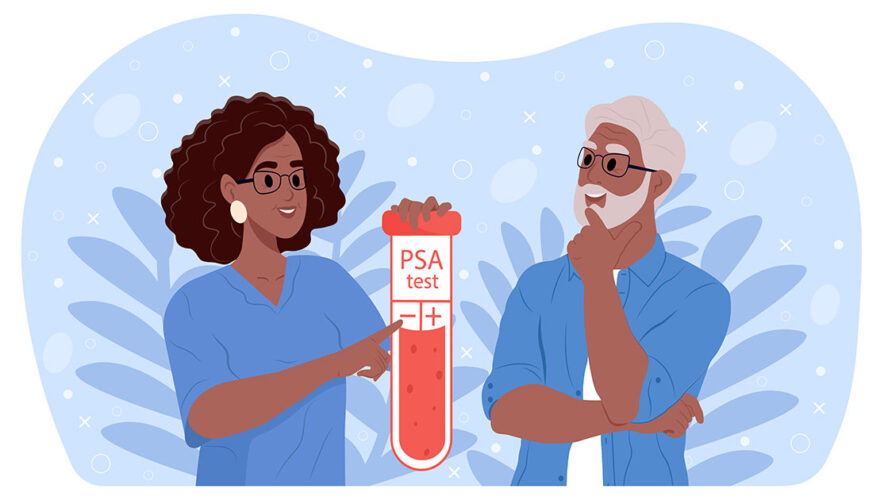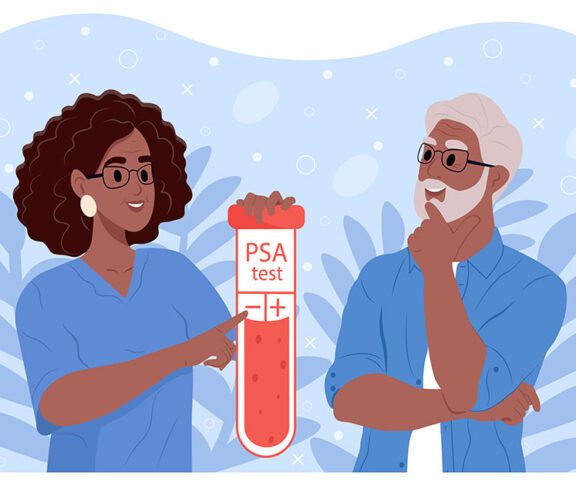Risk stratification for prostate cancer falls into two distinct but connected areas. First, we look at who is at risk for developing the disease, and second, once found, we figure out the best course of treatment. Both are critical to improving outcomes and reducing overtreatment.

Leonard Gomella, M.D., FACS
Medical Advisory Council, Prostate Conditions Education Council (PCEC); the Bernard W. Godwin, Jr. Professor of Prostate Cancer, Chairman, Department of Urology, Senior Director Clinical Affairs, Sidney Kimmel Comprehensive Cancer Center, Thomas Jefferson University

Tracy McGowan, M.D.
Chief Scientific Officer, Board Member, PCEC
After skin cancer, prostate cancer is the most common cancer diagnosis in men. Early detection by prostate cancer screening remains the cornerstone of reducing mortality. Recently, the guidelines for when to start PSA screening (in other words, at what age should men be screened for prostate cancer) have changed from a one-size-fits-all model to one that takes into consideration individual risk factors. Men with known risk factors benefit from earlier and more frequent prostate cancer screening.
“Historically, age, race, and family history (especially in a father or brother) are the main risk factors for developing prostate cancer,” says Cara Clements, director of patient engagement for Prostate Conditions Education Council (PCEC), “but today we also consider newer risk factors such as certain gene changes (e.g., BRCA), and new research areas including the microbiome and polygenic risk scores.”
After initial PSA screening, doctors use sophisticated risk calculators to decide which men need additional testing, including MRI scans, biomarker tests, or a biopsy to confirm the diagnosis of prostate cancer.
Risk stratification after diagnosis
Once a diagnosis is made, the next step is determining if the prostate cancer is contained to the prostate gland or has spread to other parts of the body. This is called staging prostate cancer.
While staging refers to the physical extent of disease in the body, risk stratification refers to the aggressiveness of the cancer or the likelihood that the cancer will grow or spread.
After a diagnosis of prostate cancer is made, doctors have many tools available to determine the aggressiveness of the cancer. These tools include PSA levels, Gleason score (how cancer cells look under the microscope), and molecular or genetic tests. Based on the results of these tests, prostate cancer patients are stratified into high-, intermediate-, or low-risk groups.
“The main goal of risk stratification is to create a personalized care plan for each patient,” explains Tracy McGowan, M.D. “We want to ensure high-risk patients get appropriate treatment in a timely fashion. Just as importantly, we want to avoid over-treating low-risk patients. Risk stratification also helps doctors decide if more tests are needed or if someone might be a good candidate for a study, and is the foundation for shared decision making between doctors and patients.”
At PCEC, we work to save and improve lives. We help men and families with personalized navigation support, early detection by holding free regional screening events, and offering education about prostate cancer and the newest tests and treatments. Together, we can change the story of prostate cancer for the better.

